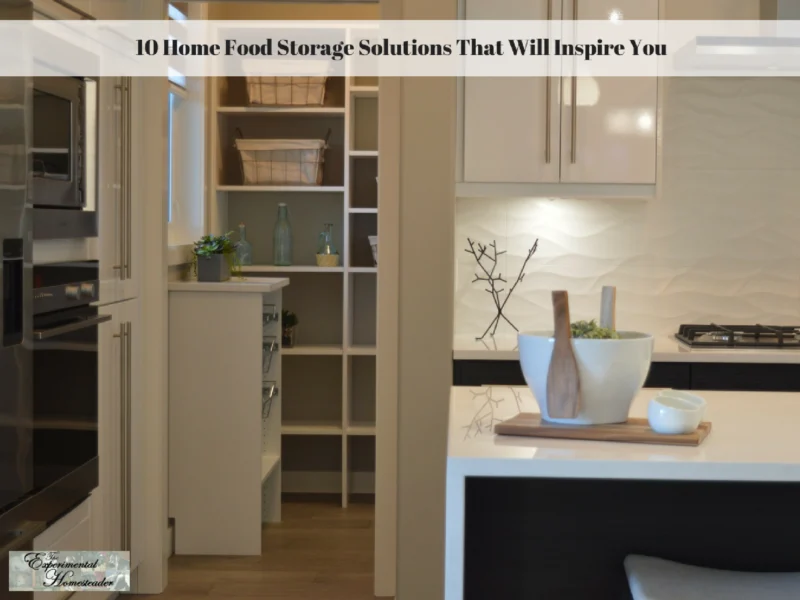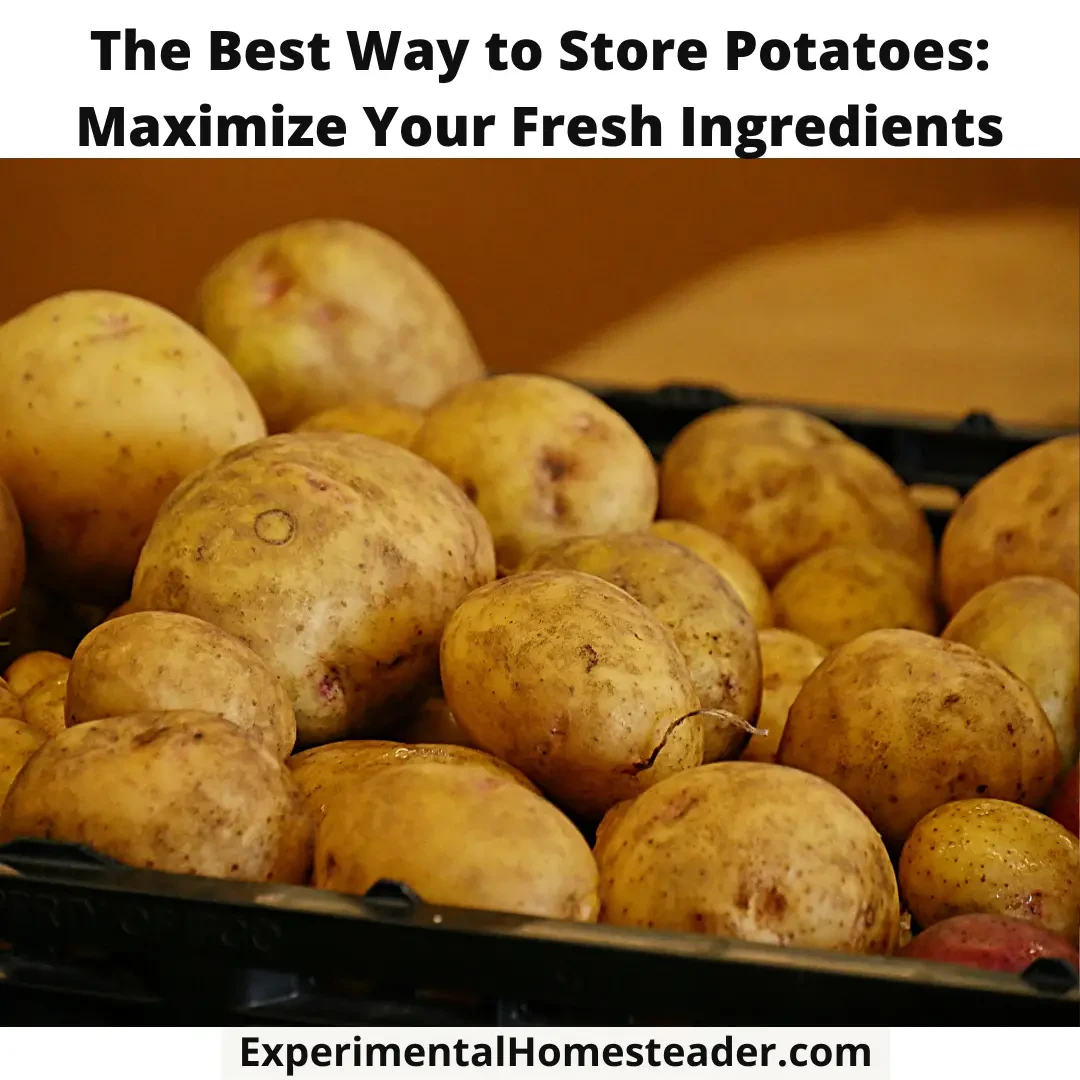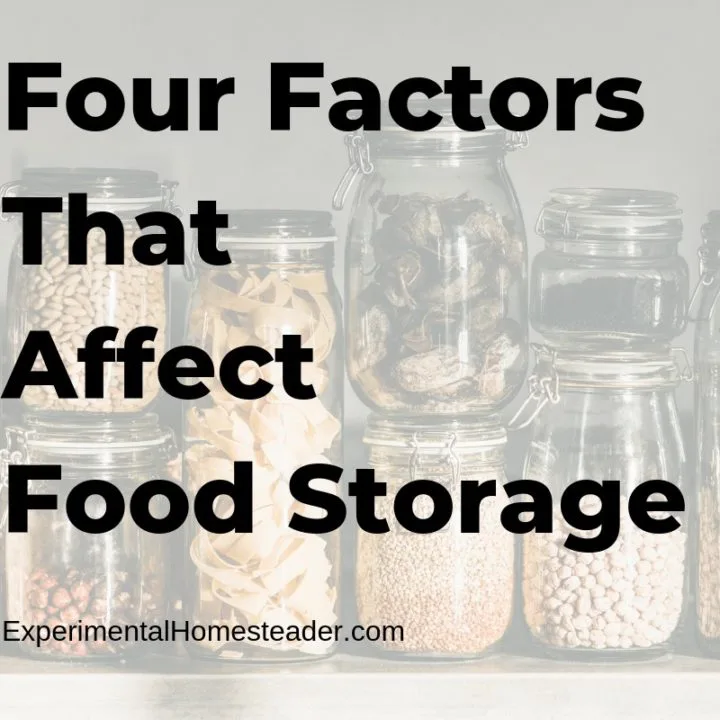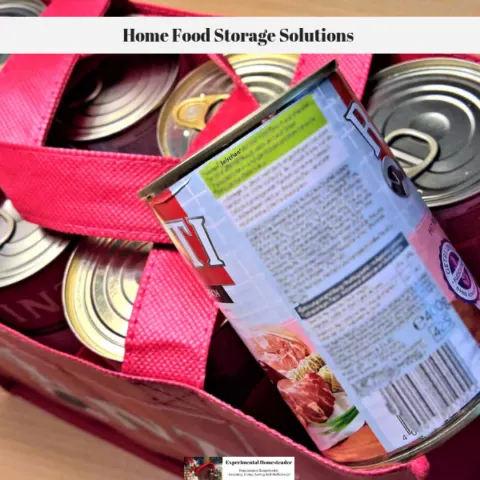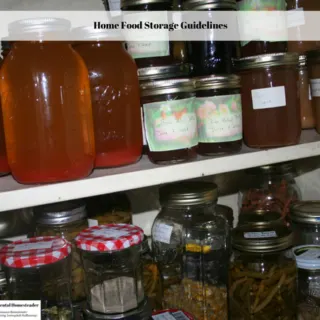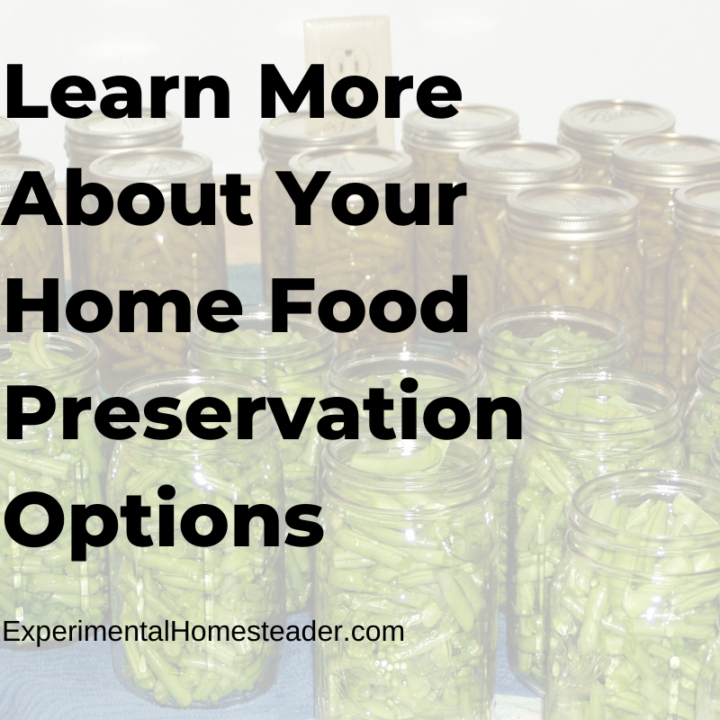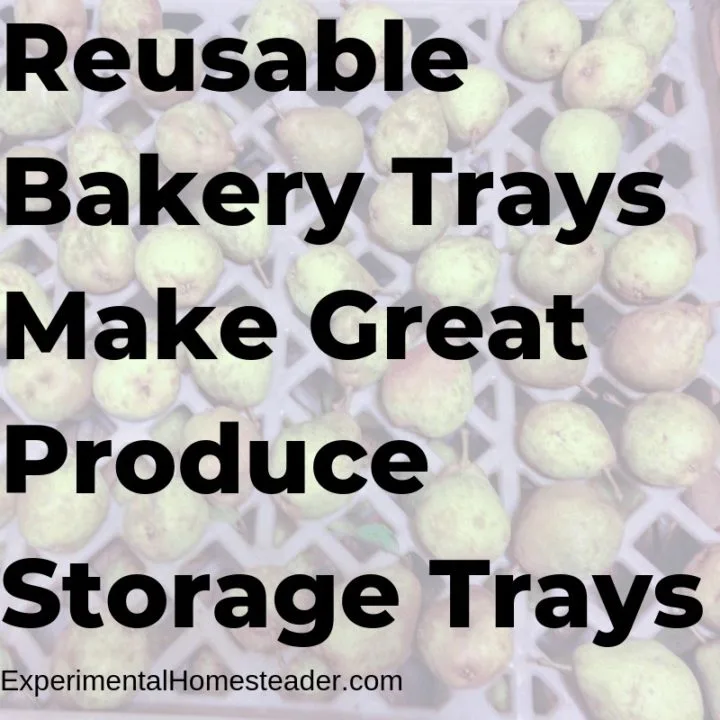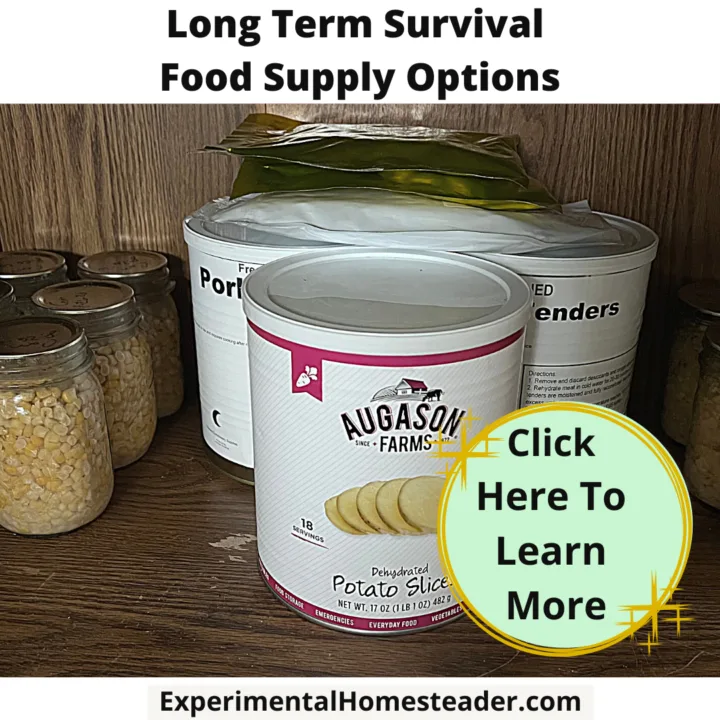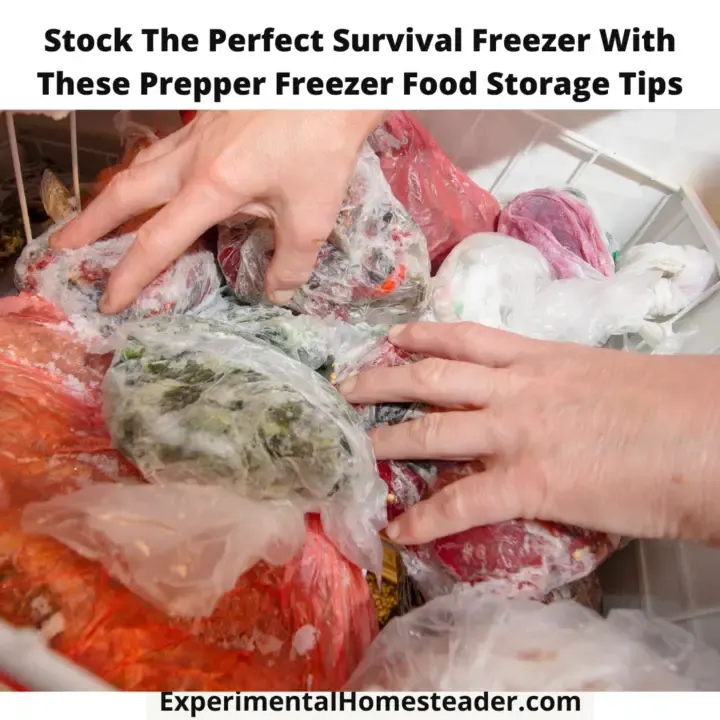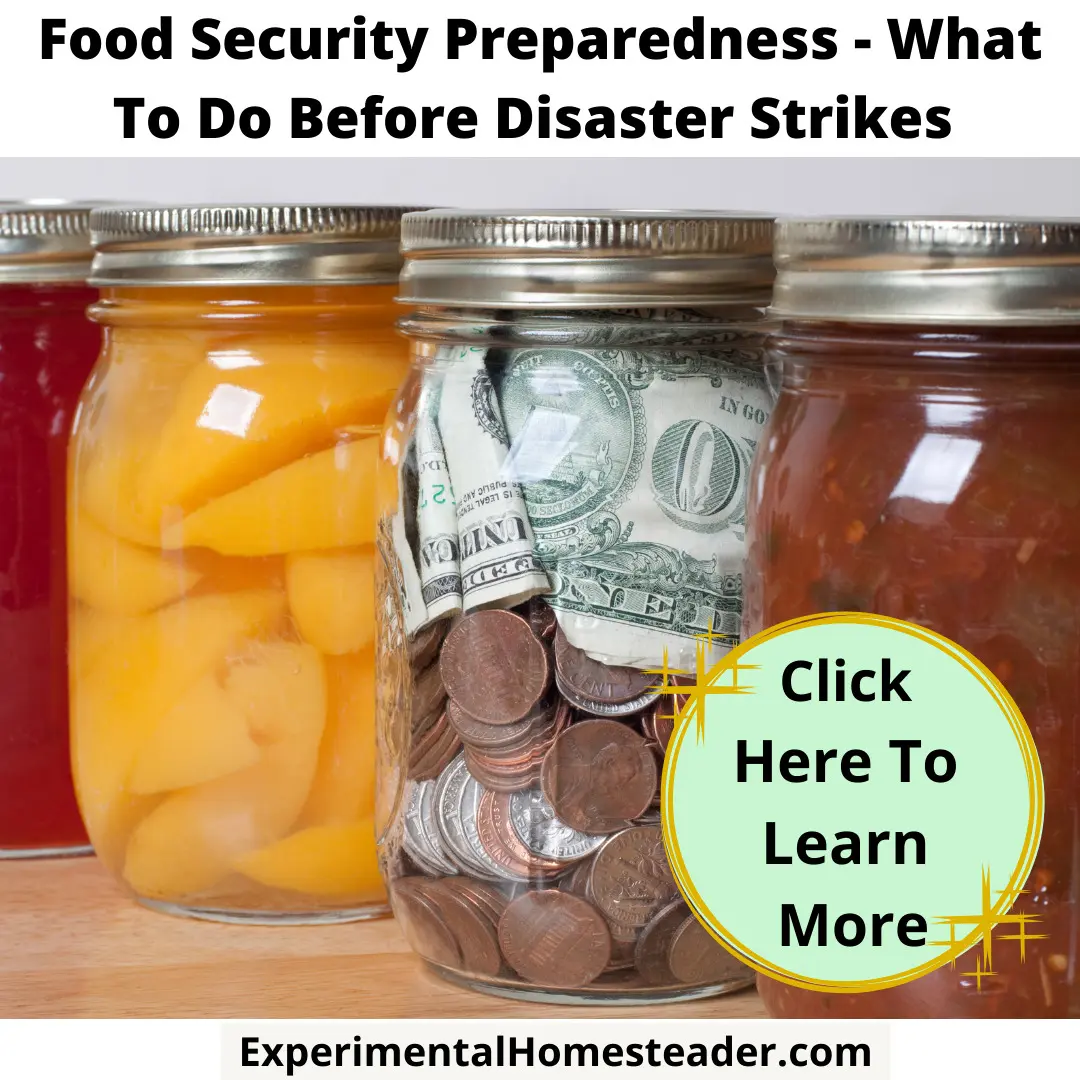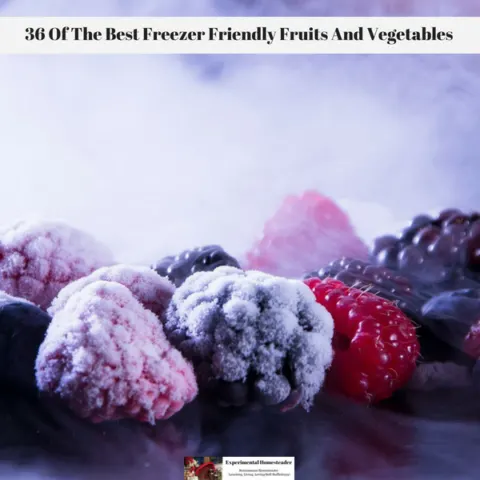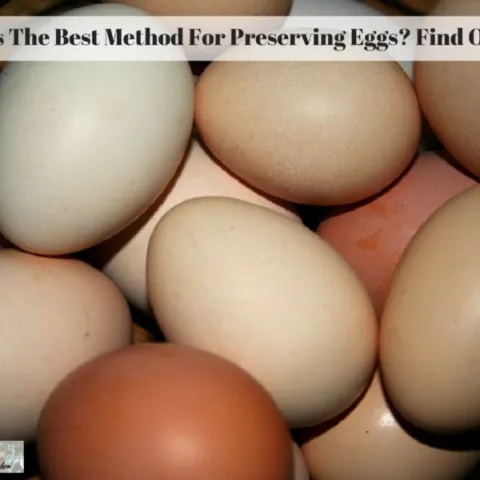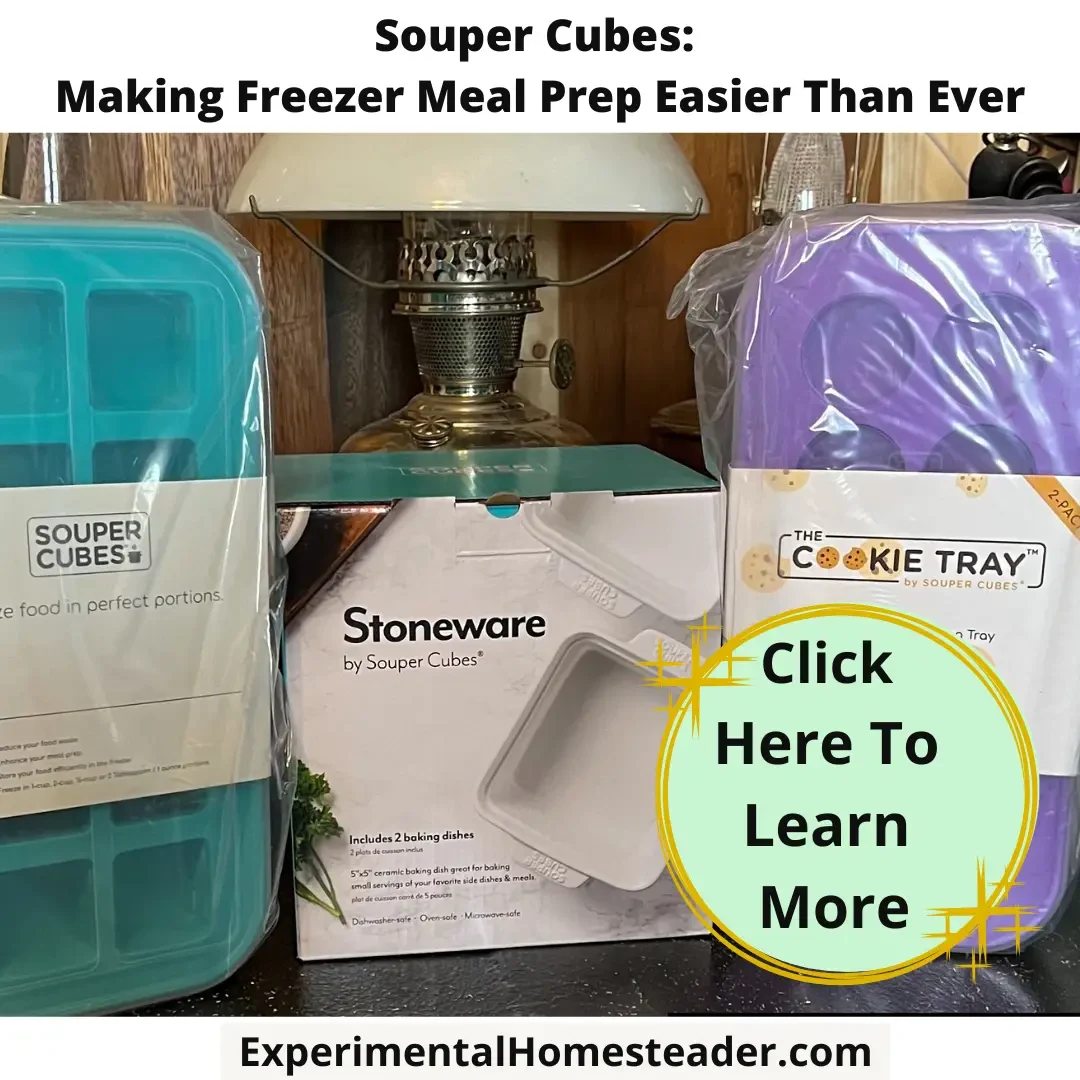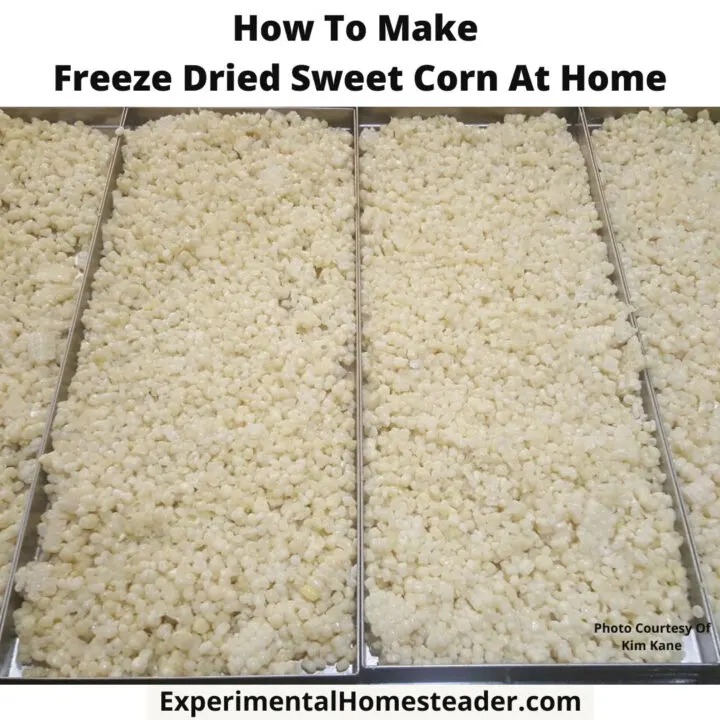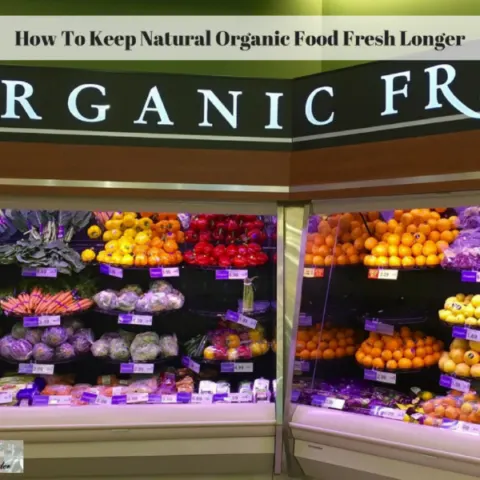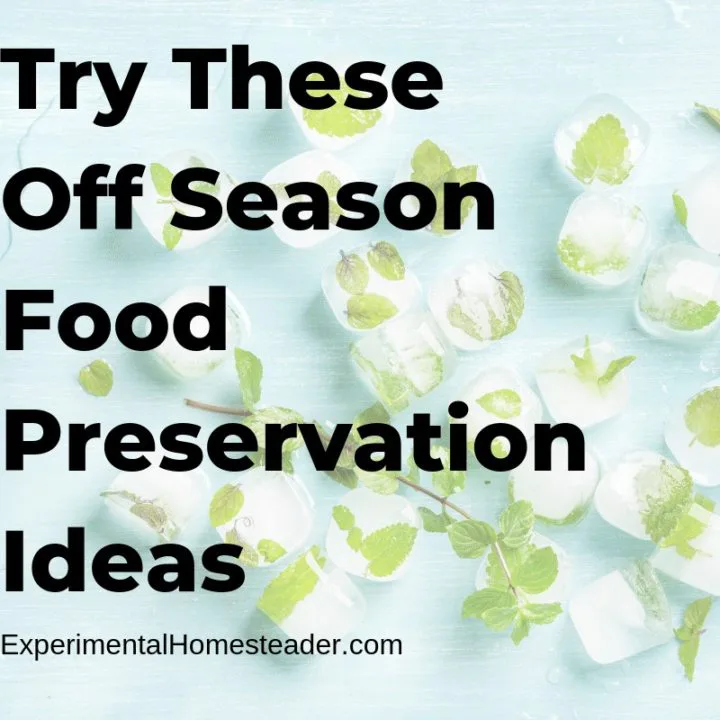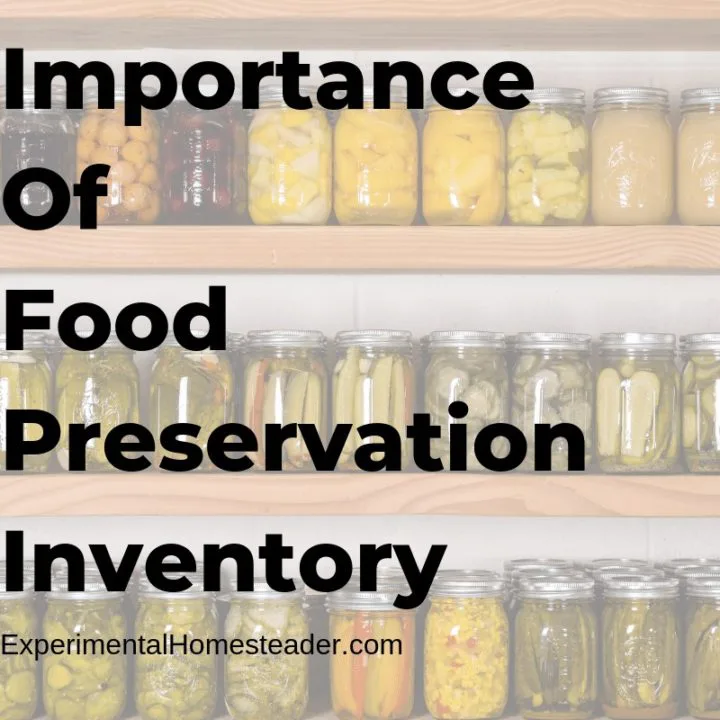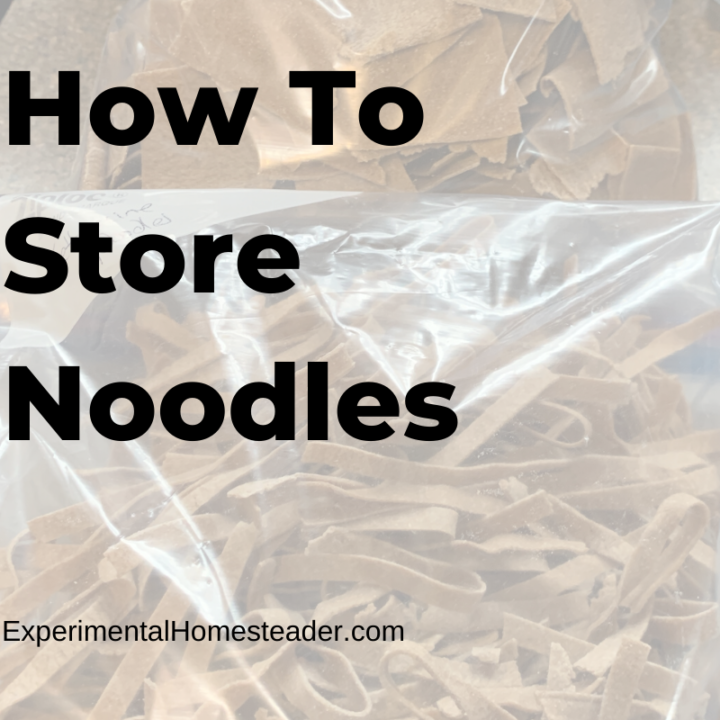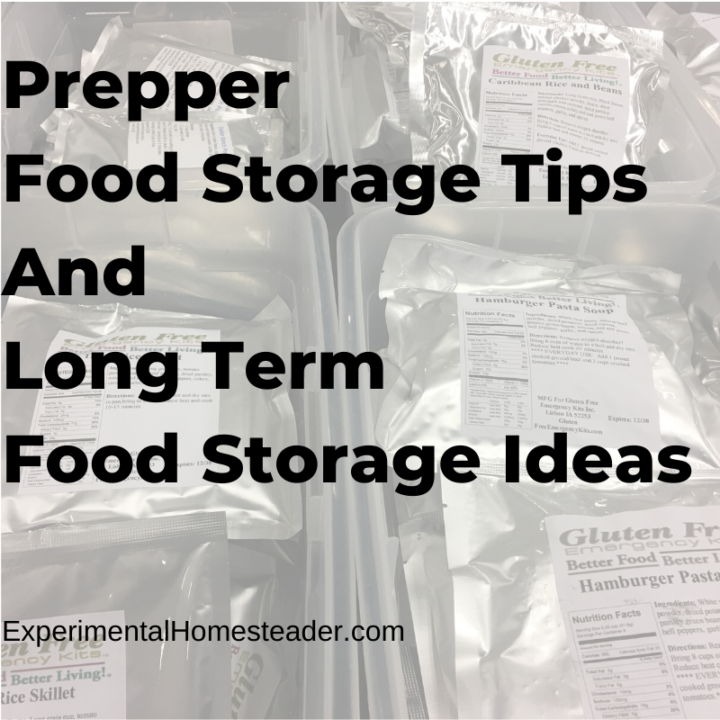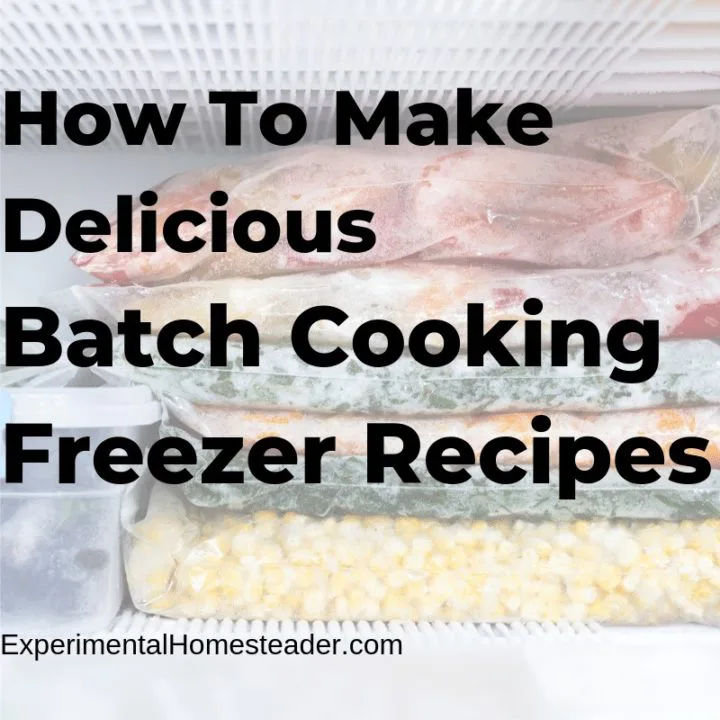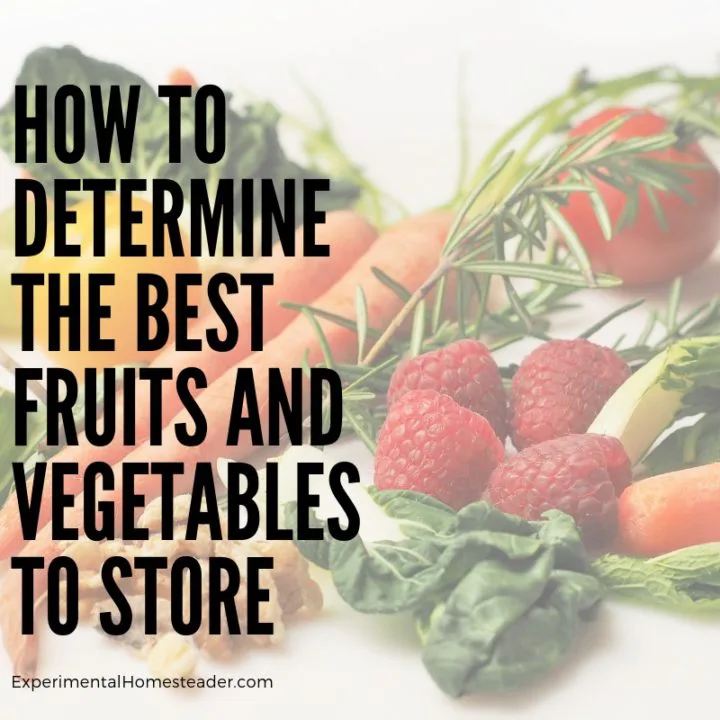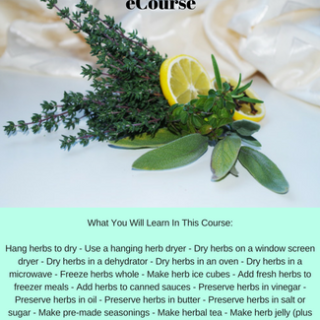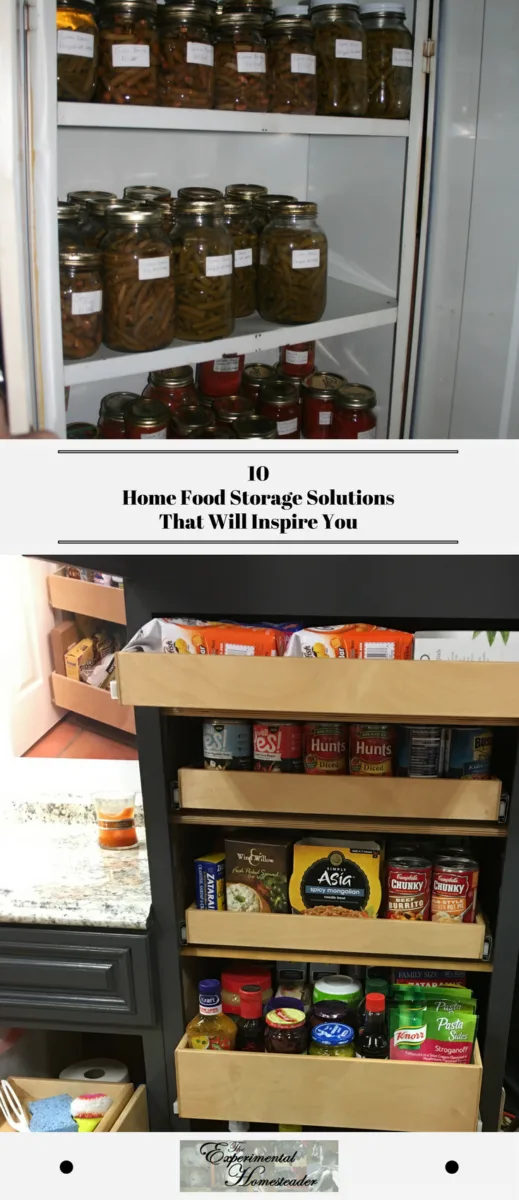Do you feel like you can't possibly stock up on food? Maybe you live in an apartment - or there is just no home food storage solutions in your home due to lack of space.
I'm going to share with you today 10 places - some obvious, some not so obvious - where you can store extra food as well as links to some products I recommend from companies I have a referral relationship with. I will be compensated if you make a purchase after clicking on my links.
Canned food or food that does not require refrigeration such as water or dehydrated foods are the foods you should store.
Fresh food - unless you can, dehydrate or freeze it does not lend itself to long term food storage.
I encourage you to put any food you buy that is in plastic bags or boxes in a metal or glass container before you store it unless you keep in your freezer.
This prevents mice or other critters from easily accessing it.
Any product with grain really needs to be frozen to prevent potential bug eggs that could still be in the food from hatching.
Now if you don't have enough room, look up the minimum freezer storage time to kill those bugs and store your grain products for just that length of time before you move them into glass or metal containers.
Make sure all your containers have tight, leakproof lids.
Oh and if you hate the site of cans stacked up, plastic totes with lids make great home food storage solutions.
Once they are sealed well in glass or metal, it is ok to store those containers in plastic.
Closet
I know my closet can get pretty messy but if you think about it, there are places in a closet - such as the floor area under your clothes - or shelving above your head - that can be utilized for food storage.
My closet is built under a stairway so I have an large area a dresser that I put into my closet that is ideal for long term food storage.
I suggest you put stockpile items here instead of putting things you use frequently.
Keep a paper list on the inside of the closet door or the inner wall - or even on your computer or phone - so you can easily see what food items are in the closet.
This is an easy way to keep track of what you have so when you run out of something you know where it is and prevent you from duplicating purchases.
Under The Bed
I love those plastic tubs on wheels that fit under the bed.
They utilize all that wasted space and make it super easy to get to the items that are under there.
You might be surprised at how much you can fit into one of those tubs and how much extra food storage space this area offers.
Some people even build their own bed frame so they can enclose that area to keep dust or mice from getting under there.
However if you follow my advise of using metal or glass sealed containers inside of your plastic tubs, this is not as issue as those do wash off easily with hot, soapy water.
You should always do this anyway to cans of food - and boxes if possible. I have been inside food warehouses and believe me the rat, mice and pest traps are unreal!
Cabinets
The kitchen cabinets are an obvious place, however if you are like me, yours might be filled with dishes!
Sometimes I can find small areas for one or two items that I am not likely to use behind the rounded edges of plates or other small unused crannies.
Are there other cabinets in your home?
The laundry room, bathroom or anywhere else that might have some extra space?
Yes, you need to make sure there are not temperature extremes or high humidity that might spoil your food, but most of the time these areas have good ventilation.
Basement
Even if you have a finished basement this is a great place for storing excess food.
Put up shelves, stack up plastic totes filled with food or build a food storage closet.
I put metal shelves with doors on them in my basement.
These are hard to find where I live because they do not sell them new anymore that I know of, but I have found some at garage sales and second hand stores for around $10.
I believe these were originally used in garages or for mason jar food storage - anyway they work great for that.
I can double stack pint jars or put quart or even half-gallon sized mason jars on a shelf.
They are about five feet tall so I can easily reach all the interior shelves.
You could build your own shelves too or even use old kitchen cabinets.
Spare Room
Many people have a spare bedroom or other room in their home that does not get a lot of use and this is an ideal place to store even more food.
In our home, there are 2 extra bedrooms, an office and a craft room.
That gives a lot of places to stack plastic totes filled with food.
Consider adding an enclosed shelving unit if you have the room to store food in.
Under The Couch
Ok, I know not everyone wants to store food under their couch but you know those metal cans do fit and it certainly does give you one more place to stockpile food.
Those of you with very limited space might find this to be a great option.
Inside Empty Luggage
We all have some type of luggage - or purses - that are not being used.
Consider filling them with some extra food.
These are great storage places that not many people think of - however keep a list so that food stays out of sight but not out of mind.
Under Or In The Coffee Table
Some people don't care if others can see their food storage efforts - and some do.
That space under your coffee table - or inside your coffee table if you have one with doors on it - is another great place to store food.
Consider building your own food storage coffee table for maximum storage space.
In Your Walls
I know this is not an option for many, but for some creating false panels in their walls and storing food between the rafters is an option.
Don't do this on exterior walls as you need those filled with insulation, but interior walls are perfect for this.
Some people even store their food in the walls in their basement so it is there but not seen.
Pantry
The pantry is a pretty obvious place to store food - but not everyone has one.
If you happen to have an extra closet in your home - or space to build a small closet - turn it into a pantry.
You can store a lot of food in a really small space and pantries sure help with keeping food organized!
Food Storage Ideas
Building Root Cellars That Work
From in ground root cellars to ones in closets, under stairwells or even in a basement, there are many options for building root cellars that work.
The Best Way to Store Potatoes: Maximize Your Fresh Ingredients
Discover the best way to store potatoes with the right selection, optimal storage conditions and routine checks & maintenance.
Four Factors That Affect Food Storage
Understanding the four factors that affect food storage is essential for keeping your food safe, especially if you intend to store it long term.
Home Food Storage Solutions
Learn about home food storage solutions that are psossible even if you have limited space as well as how to stock up on food is essential for everyone.
Home Food Storage Guidelines
Long term food storage is a great way to be prepared for an emergency. Check out these home food storage guidelines and be sure to print the handy chart!
Learn More About Your Home Food Preservation Options
Learn more about your home food preservation options incluing canning, freezing, dehydrating and a few others that are a little less known.
Reusable Bakery Trays Make Great Produce Storage Trays
Bakery trays make great reusuable produce storage trays for root cellars or even for storing fruits or vegetables during the food preservation process.
Best Foods For A Survival Pantry
Learn what the best foods for a survival pantry are and how you can build your own effective emergency food supply.
Long Term Survival Food Supply Options
When it comes to long term survival food options, there are numerous reputable companies out there but you need to choose food you like.
Stock The Perfect Survival Freezer With These Prepper Freezer Food Storage Tips
Learn how to stock the perfect survival freezer with these prepper food storage tips. Plus learn what to do if the grid goes down.
Food Security Preparedness - What To Do Before Disaster Strikes
Learn what food security preparedness skills you need to survive any natural or man-made disaster, and why you should grow your own food.
What Is The Best Method For Preserving Eggs? Find Out Now
Are you wondering how to store eggs? Learn the various techniques you can easily use at home for preserving eggs fresh from your poultry. #preservingeggs #preservingeggsfoodstorage #chickeneggs #eggstorage #eggstorageideas
Souper Cubes: Making Freezer Meal Prep Easier Than Ever
Save time and freeze with ease - Souper Cubes is revolutionizing freezer meal prep. Learn about the amazing features of Souper Cubes now!
Freezing Goats Meat
Freezing goats meat is easy as freezing other type of meat. If you raise goats or have access to goat meat this is an easy way to stock up.
How To Make Freeze Dried Sweet Corn At Home
Learn how to make freeze dried sweet corn at home. Freeze dried corn stored in mylar bags with oxygen absorbers lasts 25 years or more! #freezedriedsweetcorn #freezedriedfood #freezedriedrecipes #freezedriedcorn #freezedriedcornrecipes
Learn What A Survival Pantry Is And Why You Need One
Create a survival pantry so you can avoid panic buying and feel secure knowing your family has the essentials no matter what emergency situation occurs.
Try These Off Season Food Preservation Ideas
These off season food preservation ideas are perfect for the off season. There are lots of items you can fill your freezer with or even can year-round. #foodpreservationideas #foodpreservation #foodpreservationmethods #foodpreservationfreezing #foodpreservationhomesteads
How To Start Freezing Goat Milk
Freezing goat milk is the best way to preserve it. Learn how long frozen goat milk lasts in the freezer, how long it lasts in the refrigerator and more! #freezinggoatmilk #goatmilk #freezegoatmilk #freezemilk #freezemilkhowto #freezemilkcanyou #freezemilkstorage
Importance Of Food Preservation Inventory
Do you understand the importance of food preservation inventory? From spices to food stored in the freezer and pantry, this list can help you save money. #importantofdoorpreservationinventory #foodpreservation #foodpreservationhomesteads #foodpreservationjournal
How To Store Noodles
Learn how to store noodles including fresh homemade noodles and store bought noodles. Also learn how to store noodles long term. #howtostorehomemadenoodles #howtostorecookednoodles #howtostorehomemadeeggnoodles #howtostorecookedspaghettinoodles
Prepper Food Storage Tips And Long Term Food Storage Ideas
These prepper food storage tips are sure to help you come up with some long term food storage ideas to help you survive during an unexpected situation.
How To Make Delicious Batch Cooking Freezer Recipes
Learn how to make delicious batch cooking freezer recipes. Buying in bulk saves money. Preparing the meals ahead of time saves time. #batchcookingfreezerrecipes #batchcookingmealprep #batchcookingfreezer #freezerrecipes #freezerrecipesmakeahead
How To Determine The Best Fruits And Vegetables To Store
Learn how to determine the best fruits and vegetables to store for winter use plus get tips on how to store them for the best results. #bestfruitsandvegetablestostore #foodpreservation #fruitsstorageideas #fruitsstorage #vegetablestorage #vegetablestorageideas
Preserving Herbs For Winter Use eCourse
🌿 Unlock the Magic of Herb Preservation: Your Winter Flavor Journey Awaits! 🌿
Are you a devoted herb enthusiast, yearning to savor the taste of fresh herbs even during the chilly winter months?
Do you find yourself intrigued by the thought of using herbs in more creative and delightful ways beyond just seasoning your dishes?
Discover the secrets to preserving herbs like a seasoned pro in our brand-new eCourse: “Preserving Herbs For Winter Use”! 🌱✨
🌱 Imagine having your favorite herbs at your fingertips all year round. Envision creating exquisite pre-made seasonings, soothing herbal teas, and even your very own herb-infused oils. The possibilities are endless, and we’re here to guide you through every step of the journey.
🌿 What Awaits You in Our Course:
🌱 Master the art of drying herbs using diverse techniques – from hanging them to utilizing dehydrators, ovens, and even microwaves.
🌱 Harness the power of freezing herbs to retain their vitality and flavor.
🌱 Elevate your culinary creations by infusing herbs into butter, oil, and vinegar.
🌱 Explore the world of herb ice cubes and learn to incorporate herbs into freezer meals.
🌱 Craft exquisite pre-made seasonings that will add a burst of flavor to your dishes.
🌱 Dive into the realm of herbal teas and delve into the secrets of herb jellies.
🌱 Benefit from the wisdom of seasoned herb preservers and enthusiasts who have already transformed their culinary experiences.
🌿 But don’t just take our word for it. Here’s what some of our passionate students have to say:
🔥 “Your insights and ideas have been an absolute game-changer for me. I’m thrilled to have found a way to preserve my herbs without losing their essence!” – Julie
🔥 “A treasure trove of knowledge! Your presentation has revolutionized my herb preservation methods. Thank you for making this so accessible.” – Suzanne
🔥 “I thought I knew it all about herb preservation, but your course was a revelation. I’ve discovered new tricks that I can’t wait to implement!” – Opal
🔥 “As a newbie to herb growing, this course has been a goldmine of information. Sheri Ann’s expertise is truly priceless.” – Terri Paige-Schef
🌿 Join us in “Preserving Herbs For Winter Use” and embark on a journey that will forever change the way you engage with herbs. Let’s create a symphony of flavors that will enchant your taste buds, even in the depths of winter.
🌱 Enroll now and embrace the world of herb preservation like never before! Your winter dishes will thank you.
Let’s preserve the essence of herbs and keep their magic alive all year long! 🌿🌟
#HerbPreservationMastery #CulinaryMagic #WinterFlavorJourney #UnlockHerbSecrets

